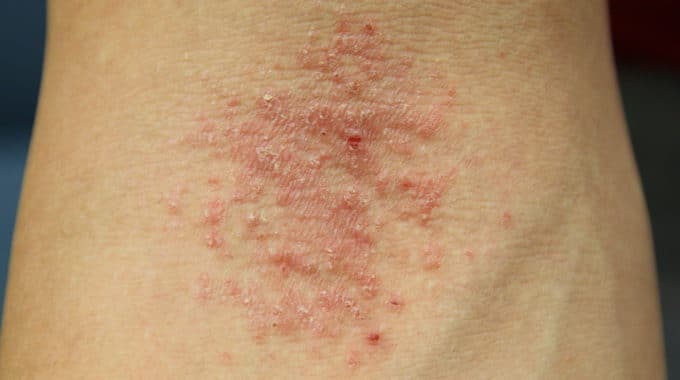We are delighted to introduce Dr. Margaret Bruns at Massachusetts Dermatology Associates! She has a…

Should I see a Dermatologist or Allergist for My Rash?
“Doc, my hand rash is ten times worse since I moved into my new house,” explained Mike as he shifted himself on the exam table. He continued, “Since the move, I haven’t had my usual soaps and shampoo and I wonder whether something new I’m using could be causing the rash. Since I think I’m allergic to something, should I have seen an allergist before coming to see you?”
Many patients with skin rashes struggle with this same question. Like Mike, they suspect that there is something in their environment triggering their rash, but they are not sure what that something is.
The most common types of allergic reactions to external agents experienced by our patients are called Type I (immediate type hypersensitivity) and Type IV (delayed type hypersensitivity). Allergists typically specialize in Type I reactions, and dermatologist focus on Type IV reactions, although both allergists and dermatologists have some knowledge about both types.
Type I hypersensitivity occurs over a rapid time period (usually minutes). These are typically reactions to inhaled or ingested environmental allergens such as pollens, grasses, dust mites, certain foods, and venoms (such as bee stings). Upon exposure to the allergen, there are blood cells that produce substances, including histamine, which rapidly elicit the symptoms of type I hypersensitivity which may include skin swelling (hives or angioedema), runny nose, and eye itching. Antihistamines are usually effective in controlling these symptoms. Hives, the most common skin symptom, may come and go but a hive rarely lasts in one specific skin location for more than 24 hours. People that have these types of allergies may benefit from prick testing, which is typically performed in an allergist’s office to attempt to determine the cause of their rash. The skin is gently pricked with a panel of allergens and, since the reaction is usually immediate, the skin test site is read in approximately 20 minutes to determine if there are allergies present. Because the reaction is so fast, a patient typically needs only one visit to the allergist to perform this type of testing. Follow-up might be needed for additional counselling and management.
In contrast, type IV hypersensitivity occurs over a more delayed time period (usually occurring greater than 24 hours after exposure and lasting at least many days or weeks). These are usually reactions to things the directly touch the skin and cause rash at the sites of contact. For this reason, this type of rash is commonly called allergic contact dermatitis. Potential causes include preservatives from creams/lotions, fragrances, rubber additives, industrial chemicals, steroids, plants, and metals. Upon exposure to the allergen there are blood cells called Langerhan cells that (rather than immediately produce histamine), recruit other blood cells called T-cells to the site of exposure. This recruitment process takes days rather than minutes which is why there is a delay until the rash appears. The T-cells that are recruited to the site of the allergen exposure promote a skin rash characterized by skin redness, scale, and itch. Since there is no histamine directly involved, antihistamines are typically relatively ineffective. Unlike hives which tend to move around and last in one place for less than 24 hours, individual areas of the type IV hypersensitivity rash (allergic contact dermatitis) may last for days or weeks. Since very small amounts of the allergen can cause the rash, and since the rash is delayed by days from the time of exposure, patients often have a very hard time figuring out the causative agent. People with this type of allergy may benefit from patch testing, which is typically performed in a dermatologist’s office to attempt to determine the cause of the rash. With patch testing, a panel of allergens is taped to the patient’s back and the patient typically returns to the office in 48 hours and 96 hours, at which time the dermatologist removes the patches and looks to see what (if any) substances the patient is allergic to.
So, should Mike have seen an allergist or a dermatologist for his rash? In this case the most likely cause was exposure to new personal care product such as shampoo or fragranced soap. The dermatologist is an appropriate choice to help identify the cause, recommend alternative hypoallergenic products, and offer patch testing if needed.
“Mike, you came to the right place. Let’s take a look at your rash and the products you’ve been using.”


